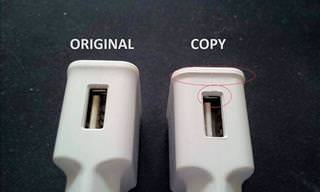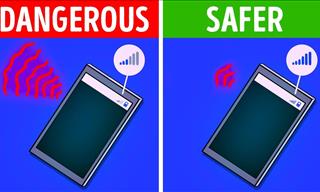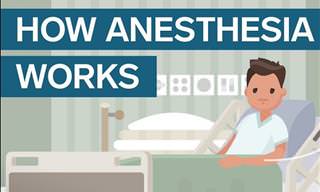
Flooding is becoming an increasingly pervasive problem for settlements and cities around the world, but that doesn’t mean that no-one is trying to do anything about it. In fact, there are some engineers that are looking at retrofitting entire cities to make them flood-proof, as well as city planners changing domestic building plans to account for hurricanes or other severe weather events.
On a somewhat smaller scale, a former associate professor at the University of Waterloo named Elizabeth English has set up the Buoyant Foundation project. Its goal is to promote the concept of amphibious buildings, in other words buildings that are designed for land, but that have the ability to self-adjust if there’s ever a flooding event in the location where they’re built.
The Buoyant Foundation Project was established in 2006, with its first prototype building launched in 2007. Located in New Orleans, the prototype house had a steel frame fastened around its underside. This frame had foam blocks affixed to it, which gave a sufficient amount of buoyancy for the house to float. The next item on the agenda was to sink posts at every corner of the house into the ground, to prevent it from floating away in the event of a flood.
Next, a flood tank was built around the house to test, and the engineers involved in the project began to pump in water from the nearby river. They managed to get it to float without it moving off its anchorage points (the posts).

A particular highlight of this technology is that the process was relatively cheap and easy to execute. What is required, however, is at least two individuals that are knowledgeable on construction, as well as some heavy equipment.
The system costs between $10 and $40 per foot to install, but this means that it’s still two to three times cheaper than putting a house on permanent elevation. What’s more is that you can’t really tell that the system is present, meaning that it’s discreet and leaves a house’s exterior almost untouched.
As with everything, there is a downside. This system is not ideal for areas that are susceptible to high-speed waves. Although it isn’t a one-size-fits-all solution, it’s an excellent solution for use in certain circumstances.

In addition, there are enough circumstances that demand solutions out there, and these have contributed to the growth of the Buoyant Foundation Project. In fact, it has been tasked with producing low-cost versions of the system for vulnerable populations in Nicaragua and Jamaica. Discussions are also taking place with indigenous populations in coastal areas of Canada and Louisiana.
One particularly significant challenge is areas in high-risk flood zones necessitate that homeowners buy flood insurance, but the US’ National Flood Insurance Program automatically disqualifies anyone who has a home with amphibious foundations from being able to receive a subsidy.
The US’ Federal Emergency Management Agency has gone on the record to say that Buoyant Foundation Project’s system requires more research, and the project has also been met with plenty of resistance from other quarters. Nevertheless, individuals outside the US believe in what the project is trying to achieve, so it looks like the tide is turning in its favor.
BONUS - See how the system works in this next video:
 9:58
9:58
Would You Live On the Moon? Discover the Possibilities...
Did you know that the human race actually has the cash and resources available to start building a base on the moon today? Find out more here.

11 Technologies to Potentially Achieving Immortality
Scientists are hard at work developing technologies that could extend our lifespans and even make us immortal. Here are 11 of them.

You Won't Believe That These Things Exist in Japan...
If there's one place on this planet that well and truly at the forefront of modern technology, it has got to be Japan, as these inventions prove...

It's Official: Gene-Edited Babies Are Now a Reality
A Chinese scientist claims to have created the world's first gene-edited babies. Let's take a closer look at the implications of this news, and what it means.
 17:06
17:06
E-Waste Is a Real Problem. What Can We Do About It?
About 6.9 million metric tons of e-waste was produced in the US alone in 2019, out of which only 15% was recycled. How can we solve the growing e-waste problem?
 4:56
4:56
Ever Wonder What Your Smartphone Is Made Of?
Smartphones are ubiquitous in the modern world, but making them is extremely energy- and resource-intensive. Watch this video to find out more about them.

How Can You Recognize a Fake Gadget Before Buying It?
More often than not, you're almost unable to recognize them. So, before purchasing the product you want to have, bear in mind the following tips:
 5:56
5:56
What on Earth Is a Black Hole? This Video Explains All...
What on Earth are black holes, how do they affect us, and should we be at all worried about their existence? Find out here.
 1:22
1:22
Are Smartphones Making Us Stupid? This Will Surprise You!
If you use a smartphone you need to see this!

10 Classic Paradoxes fom Philosophy, Math, and Physics
in every sphere of human knowledge, we’re bound to run into inconsistencies. That’s how fascinating paradoxes like these are born.
 26:45
26:45
Future Technology: Inventions That Will Change Our World
Check out a few amazing futuristic inventions that are about to become mainstream.
 6:25
6:25
These Fire Tricks Will Wow You, But Don't Try Them!
These fire tricks are incredible to look at, but please don't try this at home...

The Surprisingly Convoluted History of Traffic Lights
What did the first-ever traffic light look like? Probably stranger than you imagine...
 4:34
4:34
Fascinating Science: How Old Can We Actually Get?
All things being equal, and technology continually progressing - How old can a human body really get?
 10:01
10:01
19 Things to AVOID to Make Your Phone Live Longer
19 common mistakes we all make, that make our phones age quicker.
 5:08
5:08
Experience the True Scale of Heavenly Bodies
Witness the true scale of planets, stars and galaxies in this incredible video that sheds light on size in our universe.

What Metals Do We Mine the Most? This Graph Shows All!
Did you know the world mined 2.8 billion tonnes of metals in 2021? Let’s discover what metals we mined the most.

These Archaeological Finds Left the World Mystified
Find out more about the most mysterious discoveries that archaeologists made.

14 of the Most Fascinating Specialized Tools You'll See
We bet you haven’t seen these unique tools before!
 5:48
5:48
3 Surefire Ways to Always Identify Pseudoscience
Find out how you can identify pseudoscience, and learn how it differs from actual science.

The Facts You Didn't Know About the Human Body...
Discover 120 fascinating and surprising facts about your body you may not have known. Going over most of the body parts, you will learn so much you never knew about the body we all use.

7 Little-Known Body Parts We Never Knew About
Here's a look at some of the weird and little-known body parts that you didn’t know you had.

Wonder Why Time Speeds Up As You Age? Here's the Answer
We all get the sensation that time moves faster as we get older, but there are scientific reasons for that. Read on to learn about this fascinating phenomenon.

Incredible New Bionic Arm Fuses With Woman's Nerves
Karin's bionic hand is real sci fi, making her one of the first true cyborgs.
 2:01
2:01
What Does the Appendix Actually DO?
Dr. Berg explains, in this video, all about the appendix and what it actually does in our body.

I Never Knew These Stunning Facts About Our Universe
If you thought you understood the universe, you'll be completely floored by this insane facts.
 2:48
2:48
Revealed! This Is How Far We Have Sent Crafts into Space!
Ever wondered just how far humans have sent spacecrafts into space? If the answer is yes, then this video is just what you've been looking for.

New Study: There is a Sure Way to Slow Aging
This new study confirms what has long been suspected: The less calories we consume, the slower we age.
 9:24
9:24
These Shoes Can Boost Your Walking Speed by 250%!
Robotic engineers have created shoes that, they claim, will increase your speed by 250%.
 5:03
5:03
WHY is Sugar So Devilishy Addictive?
There seems to be a fascinating scientific explanation for why our will power is weak when it comes to sugar!

First US Embryo to be 'Edited'; Rise of Genetic Changes!
Could the first human embryos be genetically modified?

8 Lies We've Been Told About Electricity
These incorrect facts about electricity have been perpetuated long enough. It's time to disprove them.

Here Are the 16 Oldest Household Objects in the World
If you think ancient life is remote, these pre-historic household items will make you think again. Just look at how old they are!
 11:13
11:13
NASA's Plan to Colonize the Moon by 2026
NASA has a Moon colonization plan that involves utilizing 3D printers to construct an entire space station by 2026. Here's what it will look like.

How Your Eye Came to Be the Color It Is...
Why do we have different-colored eyes, and what does it mean?

STUDY: The Effect of Personality on Our Level of Happiness
Researchers finally know which types of people will always be happier than others.

These Photos Show How Dependent We are On Smartphones
Technology has taken over and these funny (but true) photos help to drive this fact home.
 4:52
4:52
Are There Universal Expressions of Emotion? Find Out Here!
Do facial expressions look the same and communicate the same meaning wherever you are in the world? Find out here!

Researchers Claim This Ingredient Can Cure Depression!
A preliminary study has suggested that magic mushrooms may be able to soothe the symptoms of depression. Read here to find out more.
 5:13
5:13
What is Your Consciousness? A Remarkable Video...
This video by Ted-ed searches to explain the origin of consciousness as well as what is consciousness.
 2:23
2:23
Introducing the Astronauts That Were Just Launched Into Space
The two astronauts — veteran NASA fliers Bob Behnken and Doug Hurley are honored to have been on this flight. Let's get to know them!
 3:16
3:16
Discover How Anesthesia Affects Your Body and Mind
If you were ever curious about how exactly anesthesia works, then this video has all the answers!

Why Do We LAUGH? 7 Studies on the Origins of Humor
As pervasive as it is in our lives, the origin of laughter remains an intriguing enigma. This article investigates the origins of laughter and humor.
 2:34
2:34
Let's Talk About Size, From Big to Huge.
an incredible discovery that leads us to a better and better understanding of these objects' true size.
 3:26
3:26
The McGurk Effect - Don't Believe Your Eyes!
What we hear can be affected by what we see...

6 Fascinating Stories of Accidental Medical Discoveries
From penicillin to pacemakers, here are the medical breakthroughs that were discovered by accident.

Wow! Who Knew That Jupiter Was So Mesmerizing?
Take a look at Jupiter like you've never seen it before!


